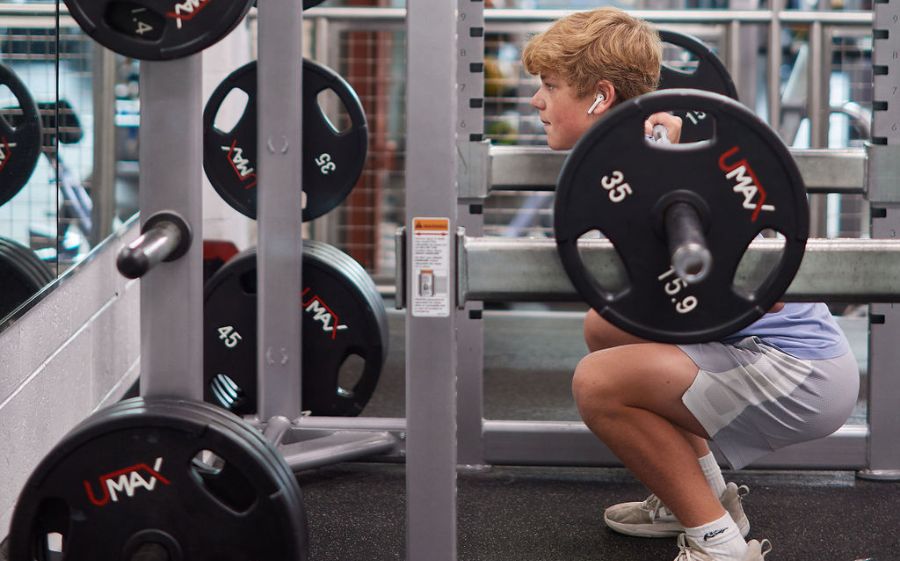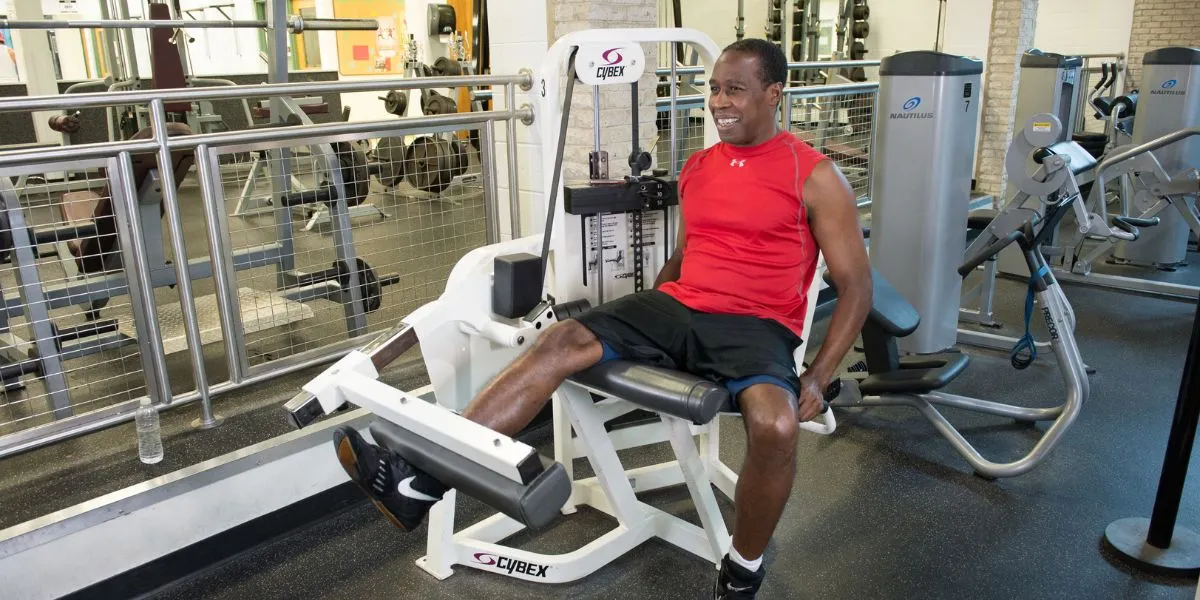
Published: 10/25/2024 - 9:00 AM
More than one in five Americans belong to a gym, and everyone has a unique workout routine. However, most people follow a pattern, such as full-body and split routines. The best workout splits for muscle growth may look different for everyone, and it helps to understand the various workout routines to make an informed decision.
There's no definitive answer to which workout is best, as each split focuses on different areas and requires different time commitments. These simple tips and ideas can take the stress out of starting a new exercise routine.
Split Routine vs. Full-Body Routine
The first step in choosing between split training vs. full-body workouts is understanding the differences between them. Let's dive in and get to know these workouts a little better.
What Is Split Training?
Split training routines separate muscle groups from one another so you can focus on specific areas. The goal is to get to the point of muscle fatigue in your target zone. Completing a split workout routine means spending more days in the gym, as you'll need to work through all your muscle groups each week.
A typical split training week could look something like this:
- Monday: Upper body and core.
- Tuesday: Lower body.
- Wednesday: Rest or active recovery, like walking or stretching.
- Thursday: Upper body and core.
- Friday: Lower body.
- Saturday: Rest or active recovery.
- Sunday: Rest day.
The Pros and Cons of Split Training
Like any training method, split training has pros and cons. Some of the benefits of split training include:
- Less strain and more recovery: Split workouts can reduce the overall strain on your body by focusing on one muscle group at a time. Your muscles also have more time to recover between sessions. For example, if you focus on your lower body on Tuesdays and Fridays, those muscle groups have a few days to recover between sessions.
- Focused results: Working focused muscle groups to fatigue stimulates muscle repair, which often means muscle growth. Split training can be more intense, which may lead to better results if your goal is to build muscle.
Some of the drawbacks of split training include:
- More time: Getting the best from a split routine requires a significant time investment. If you're a beginner, less frequent full-body workouts may be better for you. It's also important not to skip any days when you're on a split training schedule, or you'll favor certain muscle groups. You need to stick to the routine for split training, which means limited schedule flexibility.
- Potential imbalances: Targeting specific muscle groups requires a sound understanding of exercise. If your routine is improperly structured, you'll prioritize some muscle groups over others. Beginners may benefit from full-body workouts that build strength before progressing to split training.
What Is a Full-Body Workout?
A full-body workout routine involves using every major muscle group in each session to train your body and boost your overall strength and fitness. For example, you might work out on Mondays, Wednesdays and Fridays.
You can even switch this routine and train twice per week, allowing more recovery between sessions.
The Pros and Cons of Full-Body Workouts
Full-body workouts are ideal for many fitness enthusiasts. They provide the following advantages:
- More schedule flexibility: Whether you're a beginner or have many commitments, making time to exercise more than three times a week can be unrealistic. Full-body routines allow you to get the maximum benefit from your time, and if you miss a day, you'll still target all of your muscle groups in your next session.
- Balanced development: Each workout balances the strain on your muscle groups, so you won't fall into the trap of favoring some over others. These workouts are fantastic for beginners. They provide a comprehensive introduction to strength training and lay the foundation for more focused workouts.
Some of the disadvantages of a full-body workout routine include:
- Less recovery time: Depending on your chosen workout routine, your muscles may need more time to recover. You'll work the same muscle groups more than once a week, which can strain your body more.
- Risk of overtraining: Full-body workouts can push you and raise your heart rate. Pushing too hard or limiting your recovery time can lead to overtraining.
Push/Pull/Legs vs. Upper/Lower vs. Full-Body
As you progress through your new workouts, you may want to introduce some variety in your training. For example, you can choose from full-body vs. upper/lower or push/pull/legs workouts. These more detailed splits allow you to focus your training. As we've already discussed upper/lower and full-body routines, let's look at the push/pull/legs option.
Push/Pull/Legs (PPL)
The push/pull/legs split allows you to focus on three areas:
- Pushing exercises: On push days, you focus on pushing a weight away from your core with exercises like bench presses, pushups, and shoulder presses.
- Pulling exercises: These exercises target different muscle groups as you pull something toward you. They could include barbell rows, pull-ups, and lat pulldowns.
- Leg exercises: On leg day, you focus on your lower body, activating muscle groups like your quads, calves and hamstrings.
The advantage of this workout routine is that you can focus on specific muscle groups. It provides a targeted approach that promotes balanced muscle development. Concentrating on each muscle group more than once weekly also increases training volumes. You can tweak PPL routines to suit your goals, making them a flexible and effective workout alternative.
PPL is an excellent choice for many, but it does have some drawbacks. Training each muscle group more than once a week could impact recovery, so planning your workouts for ample recovery is essential. It's also a more general split, which may make it unsuitable if you want to target a specific imbalance. Additionally, PPL splits also require a significant time commitment.
What to Consider When Choosing a Workout Split
When considering whether full-body workouts are better than splits, the answer is that it depends. Studies show that both provide similar strength and muscle growth benefits, so your choice depends on other factors, including:
- Time investment: Consider how many days a week you want to devote to training. Full-body workouts may be better if you only have two or three days available.
- Lifting experience: The more experienced you are, the greater training volume you need to see growth. As you put in hours at the gym, add more training days and targeted workouts to your routine. If you're a beginner, full-body is the best starting point. From there, you can progress to an upper/lower split and then a PPL split.
The most important thing to remember is that consistency is the best path to success. Whatever routine you choose, sticking with it will get you the results you want. So, be realistic about your goals and time commitments, find the workout routine you can commit to and have fun with it!
Find Your Ideal Workout Routine at the Y
Following a dedicated workout routine can help reach your fitness goals. Working out at one of 16 Greater Philadelphia YMCA locations is an excellent way to maximize your workouts. Our fitness and wellness coaches will help you choose the ideal workout split. You can also embark on your health and fitness journey with like-minded people who share the same goals.
Get started on your fitness journey and become a member today!

